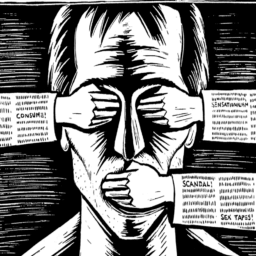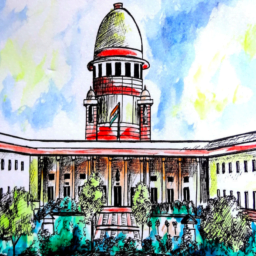INTRODUCTION
Article 356 of the Indian Constitution has always been in controversy as it lacks clarity. It is enforced when there is a “failure of Constitutional machinery” in a State.[1] The Administrative reforms Commission provides the meaning of this expression. It suggests that Constitutional machinery fails when there is a political breakdown; Ministry violates the provision of the Constitution or misuses Constitutional power; the State fails to comply with directions provided by the Union in the exercise of its executive power under any of the provisions of the Constitution.
HISTORICAL BACKGROUND
Article 356 provides the power to Union to dismiss a democratically elected state government. This provision is nowhere practised by the liberal democratic Constitution except Pakistan. India and Pakistan borrowed this provision from the Government of India Act, 1935. There was a lot of opposition by leaders of the Indian freedom struggle and they forced the British government to suspend it. So, section 93 of the Government of India Act, 1935[2] was never brought into effect. But unfortunately, the provision that was opposed during the freedom struggle was incorporated in the Constitution. Sarkaria Commission Report[3] suggests the intention behind the inclusion of this Article. It stated that the inclusion of Article 356 was necessary to deal with the problems that were expected to be faced by India after independence. Leader’s socio-political experience made them aware and realize that the security of the nation cannot be taken for granted. Therefore, it was incorporated for the preservation of Democracy, stability, Federalism. Ambedkar assured that Article 356 would remain a dead letter but it has been misused or used more than 125 times. In most cases, it was used for political purposes rather than a true failure of Constitutional machinery. It is used as a Constitutional way to misuse power. Indira Gandhi, the former Prime Minister used this provision around 27 times to remove the majority government based on the absence of a clear mandate or withdrawal of support, political stability, etc. In 1977, the Janata party retaliated against the action of Mrs. Gandhi by removing nine Congress governments. In this long-run relay race, again Indira Gandhi removed nine opposition majority governments on her return at one go. A similar trend was followed by the subsequent government.[4]s
LANDMARK JUDGMENT RELATED TO ARTICLE 356
In the S.R Bommai case, a question was raised regarding the misuse of Article 356. Additionally, it attempted to curb the misuse. In this case, the Chief Minister of Karnataka was dismissed and consequently, the president’s rule was imposed. He was dismissed before providing him a chance to prove his majority at the floor test. So, the court held that the president’s satisfaction should be based on objective material. Additionally, the objective material may be available in the report sent by Governor or otherwise or both. The material should indicate that the Government of the State cannot function as per the provisions of the Constitution. The court classified the circumstances of the failure of Constitutional machinery into- political crisis, internal subversion, physical breakdown, and non-compliance with directions of union executive.[5] Earlier, in the case of the State of Rajasthan vs Union of State, the Supreme court declared that Article 356 would not be subject to review by courts, and the president’s decision shall be conclusive and final.[6]
In the Rameshwar Prasad v. the State of Bihar case, the court said that the proclamation of emergency cannot be imposed according to the whims and fancies of the Governor. It stated that proclamation should be based on true and cogent grounds. In this case, the court disqualified the proclamation as there was no objective material in the report, submitted by the Governor to the President, that could gain the president’s satisfaction.[7]
In C.R Das v UOI, the Governor provided a report to the president stating the degradation of law and order in the state. But president refuses to comply with it and stated that bad governance does not amount to a breakdown of Constitutional machinery. However, an emergency was imposed when the government sent a report but was later invoked because it was not passed in Rajya Sabha.[8]
MISUSE OF ARTICLE 356
It is undoubtedly said that Article 356 has been misused in many cases. We will discuss few cases where it has been misused. The first case is of Arunachal Pradesh. In 2016, a situation of instability arises when 20 MLAs belonging to the ruling Congress party joined hands with BJP. But two independent MLA rebelled against the honourable Chief Minister, Nabam Tuk[9]i. They put their desire of forming government in State before the Governor and subsequently the latter without providing information to Chief minister advanced assembly session. Additionally, he listed the removal of the speaker (legislative assembly). Consequently, the speaker disqualified 20 MLAs based on defection. The Governor formulated a report and sent it to the President for imposing the president’s rule. The president considered this report and dismissed the Congress-led government. A petition was filed in the Supreme court by Congress but before the court’s decision, the coalition government was sworn in. In this case, the basic question arises whether the Governor considered all the reasonable grounds before preparing that report. The reasons that he cited for the president’s rule were a slaughter of cows and rebel of 20 MLAs. It is shocking to understand that in a vast country like India, where the violation of animal rights and protest by MLAs is a day-to-day issue but still Article 356 was imposed. In this case, the Supreme court considered the actions of the Governor unconstitutional. Therefore, it can be concluded that the governor should not act in an arbitrary or fanciful manner.
In another case, the president’s rule was imposed in Maharashtra. There was a tussle of CM post among various parties post assembles results and because of this, there was no consensus. So, the Governor prepared a report and sent it to the President. The President considered this report and imposed the president’s rule. [10]However, this decision was widely criticized as Article 356 should be used as a last resort. Under similar circumstances, Allahabad High Court in H.S. Jain v UOI stated that the Governor should ask the house to assemble and create a consensus in a reasonable time and if they could not commonly agree then the house may have to be dissolved.[11] But in the case discussed earlier, the Governor formulated a report and sent it to the President before providing information to political parties. Therefore, the need to warn the political parties arises in such circumstances because there exists a possibility that parties may build a consensus.
OTHER CASES AND RECOMMENDATIONS
According to the Administrative Reforms Commission, the Governor’s report has to be objective as well as the Governor should independently exercise his judgment about the president’s rule.[12] The Rajamannar Committee recommended that Articles 356 and 357[13] should be deleted from the Constitution of India. Additionally, the necessary provisions against the arbitrary action of the ruling party at the centre under Article 356 should be incorporated. It also recommended that the Governor should play his role as a Constitutional head of state rather than as an agent of the centre. [14]Article 356 should be used in very rare cases as per the Sarkaria Commission. It should be used when it becomes unavoidable to restore the breakdown of Constitutional machinery. Additionally, a warning should be issued to the government of the State before the imposition of the president’s rule.[15] Justice V. Chelliah Commission suggested that when all actions under Articles 256[16],257[17],355[18] are exhausted then only it should be used. It should be considered as a last resort.[19] According to Punchhi Commission, Articles 355,356 should be amended as it would curb its misuse and protect the interest of states.[20]
CONCLUSION
Therefore, it can be concluded that the vagueness and subjective nature of Article 356 is the major reason for the misuse. But sincerely adhering to the recommendation provided can fill the gaps that are currently present in Article 356. Additionally, misuse can be restricted by limiting the scope of the word” otherwise” in Article 356 and amending it with respect to the guidelines provided. Moreover, there is a need to construe the circumstances under which it is violated to formulate a better, effective amendment.
Author(s) Name: Prashansa Agarwal (Bennett University, Greater Noida)
References:
[1] Constitution of India, Article 356
[2] Government of India Act
[3] Sarkaria Commission Report 1988
[4] Faizan Mustafa ‘Article 356 and an activist judiciary’ the hindu( 26 december,2020) <https://www.thehindu.com/opinion/lead/Article-356-and-an-activist-judiciary/Article33419769.ece > (accessed on 11 August,2021)
[5] SR Bommai v Union of India (1994) 3 SCC 1
[6] State of Rajasthan v Union of India AIR 1977 SC 1361
[7] Rameshar Prasad v Union of India (2005) 7 SCC 149
[8] C R Das v Union of India AIR 1999 Pat 221
[9] Nabam Rebia v Deputy Speaker Arunachal Pradesh Legislative Assembly, (2017) 13 SCC 326
[10] Vijaita Singh, ‘Maharashtra Placed under President’s Rule’ The Hindu, (12 November, 2019) <https://www.thehindu.com/news/national/other-states/presidents-rule-imposed-in-maharashtra/Article29954298.ece> (accessed on 13 august,2021)
[11] H.S. Jain and Others v. Union of India and Others, (1997) 1 UPLBEC 594
[12] The Administrative Reforms Commission 1968
[13] Constitution of India, Article 357
[14] The Rajamannar Committee 1971
[15] The Article Commission 1988
[16] Constitution of India, Article 256
[17] Constitution of India, Article 257
[18] Constitution of India, Article 355
[19] “Justice V. Chelliah Commission” 2002
[20] Punchhi commission report
















